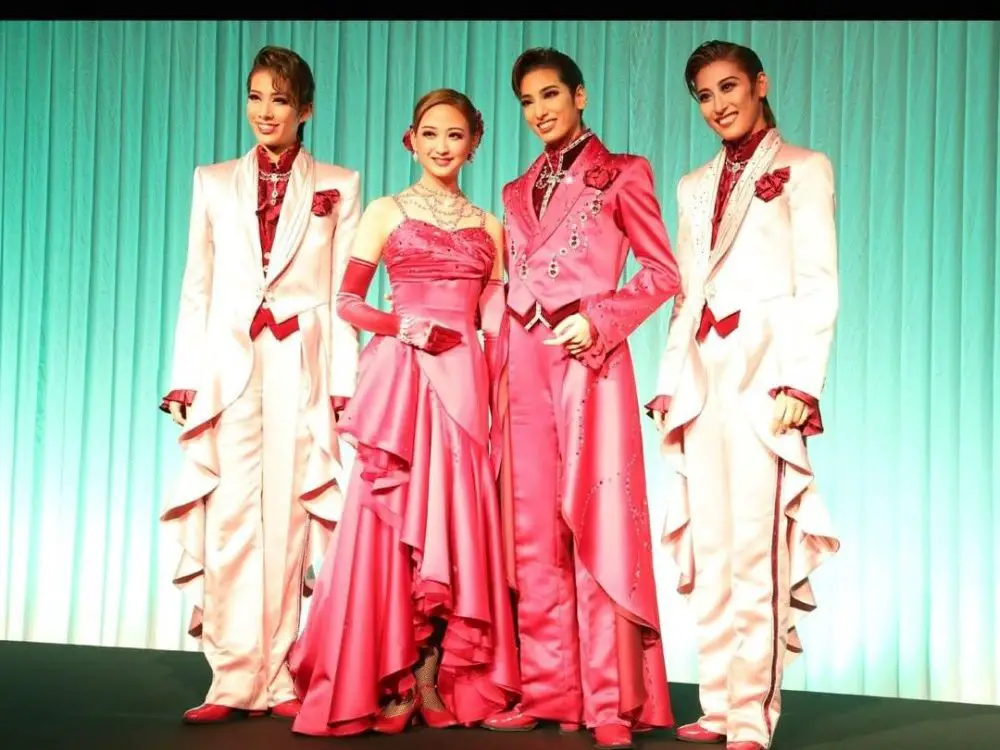Takarazuka Revue is a special type of musical theater in Japan. The inverse of traditional Kabuki theater, which only employs male actors, Takarazuka theater consists solely of female actors. Takarazuka Revue features male and female roles in their plays, with the actresses that play male roles known as Otokoyaku, and the actresses that play female roles referred to as Musumeyaku. As a whole, Takarazuka performers are referred to as Takarasiennes. The male roles in these performances are the most sought after for a big reason. For those lucky enough to become an Otokoyaku, the fans become even more adoring, and the fans of Takarazuka Revue have proven themselves to be some of the most loyal in the world. With an audience that is estimated to be about 90% female, women in particular are attracted to Takarazuka performances and Otokoyaku actresses for many different reasons.
In the documentary “Dream Girls,” young fans of Takarazuka theater explain that their favorite actresses can portray men in ways that male actors can’t. They go on to say that the magic of Takarazuka is that it makes them believe in fairy tales, and male actors would be too coarse in the roles displayed in the musicals. Other fans echoed this, adding that women can truly display what an ideal man is, one that is sweet, romantic, sensitive and caring — without all the bad parts of men. Fans feel freer to share their love for the Otokoyaku actresses, explaining that it’s more comfortable to truly express their admiration for a woman rather than a man. Rather than mob their favorite Takarasiennes after a performance, fans wait patiently, gifting the stars sweet love letters, cards and gifts.
With only 40-50 girls accepted into the Takarazuka Music School every year, the competition to become a Takarazuka performer is extremely fierce. Students practice their singing, dancing and acting skills for two years before joining their seniors on the Takarazuka stage. The school is undeniably strict for first-years, with intense training and a tradition that has them clean the school top to bottom before starting class. At the end of their first year, students are assigned their roles of either Otokoyaku or Musumeyaku, which they practice more intensely over their second year.
The Otokoyaku students have to take on a more manly attitude, along with cutting their hair short and speaking in the Japanese masculine form. Those that become the top stars of Takarazuka enjoy a large loving fanbase and receive gifts and love letters from their fans. However, top stars of the company are only allowed two years as the top star before they are forced to retire. After retirement, their star status doesn’t go away, and most go on to perform in other musicals or plays, and more recent stars have acted in TV dramas and movies.
The way that gender exists in Takarazuka Revue is very interesting. According to an essay by Leonie Rae Stickland, Takarazuka has significantly changed views of gender in Japan over its lifetime. Stickland also goes on to describe some of the ways that Takarazuka interacts with the concept of gender, stating, “Takarazuka’s practices show that gender is not inherent, but must be learned through observation, imitation and direct instruction and that various versions of male gender can be assumed for specific purposes, even temporarily, by biological females (and vice versa).”
This type of performance can be liberating for the women in the audience as well, as it shifts conceptions of gender roles and what it means to be a man or a woman. The actresses’ own perspectives on gender are also very interesting. Many state that they get into a particular “male” mindset in order to correctly perform their roles. This can bleed into their off-stage life as well. An interviewer in “Dream Girls” asked now-retired Otokoyaku Keaki Mori about how she felt when her dad said that she seemed more like a son to him, to which Mori gave a light laugh. She replied that after her retirement, she would like to become more like a daughter again.
The plots of Takarazuka Revue shows are tailored for their majority female audience, and most are heavily focused on romance. Same-sex pairs on stage are socially allowed more freedom to be erotic in their performances. Some think this is a big draw of the performances, and there are debates on whether the audience interprets these couples as being in a straight or lesbian relationship. Many assert that, since all actors are female, there are lesbian overtones in every sense of the performance and this lesbian eroticism is the reason Takarazuka musicals are so beloved by female audiences. Others state that the women’s empowering performances of reversed gender roles are the biggest pull for fans.
In the early days of Takarazuka, love letters from fans to an Otokoyaku were revealed to the public. When they were published in a newspaper in 1921, society started to rethink Takarazuka performances, and many condemned them for promoting an “unnatural” type of love. As a result, Takarasiennes were more strictly separated from their fans, and performances were dulled down to be read as less homoerotic. Even today, Japan is still very far from being accepting of its LGBTQ+ community. Despite this, the popularity of Takarazuka lives on and Otokoyaku actresses continue to captivate female audience members with their androgynous charm.
The long history of Takarazuka establishes that its popularity will only continue to grow. While the intense training might seem daunting, it doesn’t stop thousands of Japanese girls from auditioning each year. Gender interacts with these performances and actresses in ways that create a beautiful new type of expression for both the women who act and the women who watch in adoration. Without a doubt, Takarazuka produces some of the most amazing performances — and some of the prettiest men — in the world.
















